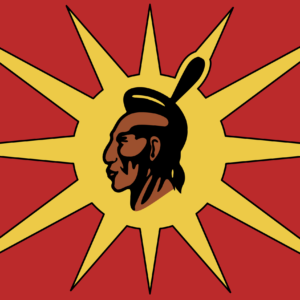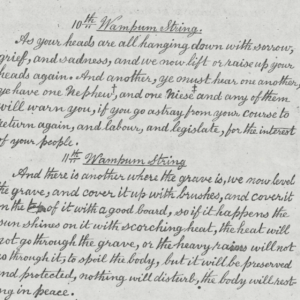
The year was 1677 and King Charles II of England was deep into the colony business for profit. The British were desperately entering into treaties with various east-coast indigenous nations in an attempt to edge out France and Holland for the biggest piece of the pie.
At a council meeting in 1684, Virginia Governor Lord Effingham glanced at his silver pocket watch, nervously. He put it back into his pocket. The Mohawk and Seneca Indians routinely started with a very long prayer at each political meeting and it was starting to make the governor anxious.
“We need to get to the serious business at hand, there is no time for your Indian religion,” Lord Effingham abruptly shouted. “How much longer is this going to take?”
The speaker had been holding a string of beads and reciting a speech for the last hour.
Unfortunately, the highly educated official did not understand the complex social and cultural differences between him and his hosts. He did not grasp the significance of our Thanksgiving Address or the Ohen:ton Karihwatehkwen “Words Before All Else”.
This ancient prayer dated back to the time of the Peacemaker. Although we might be political enemies, it reminded us of all the things we have in common, the natural world we share, and to be genuinely thankful for it. Absolutely essential for peace, it was the most important part of the meeting.
“Ask him how much longer this speech will be,” Effingham said to his Indian translator.
Because the Mohawk and Seneca did not slice the day into tiny seconds and minutes they found the British interruption amusing. Things took as long as they had to take.
After a bit of explaining the speaker for the Mohawk nation walked forward and said, “It will take about this much longer,” as he formed a hand sign with his thumb and index finger. A chorus of laughter burst from the Haudenosaunee side of the room. The speaker turned to the left and to the right showing the hook symbol to the entire room while smiling.
Three-hundred years later this hand sign took on more perverted undertones but one thing stayed the same – the hook was an emblem of our sense of humour.
Throwing up the hook is a special way to say “I’m Six Nations and I’m proud.”
Sometimes we might overlook the significance of cultural expressions like these because they seem unimportant or too ‘rezzed’ out. Maybe some people are embarrassed by the hook. Regardless of your stance, the hook is even in the N.Y. State reserves on the other side of the line.
But think of how many different expressions have endured the test of time, almost erased by residential school.
We were deeply honoured to see community members throwing the hook sign up when they posed for Two Row Times pictures. No matter how it actually began the hook has become part of our national identity (That story is just a little work of fiction I made up that is based upon a version of oral tradition).
I was telling my neighbour Jord that I was gonna write the history of the hook. He just said “Huh-holy heckinnit …”. There was an awkward moment of silence. Then he kind’a half sang “If you don’t know, now you know.”






